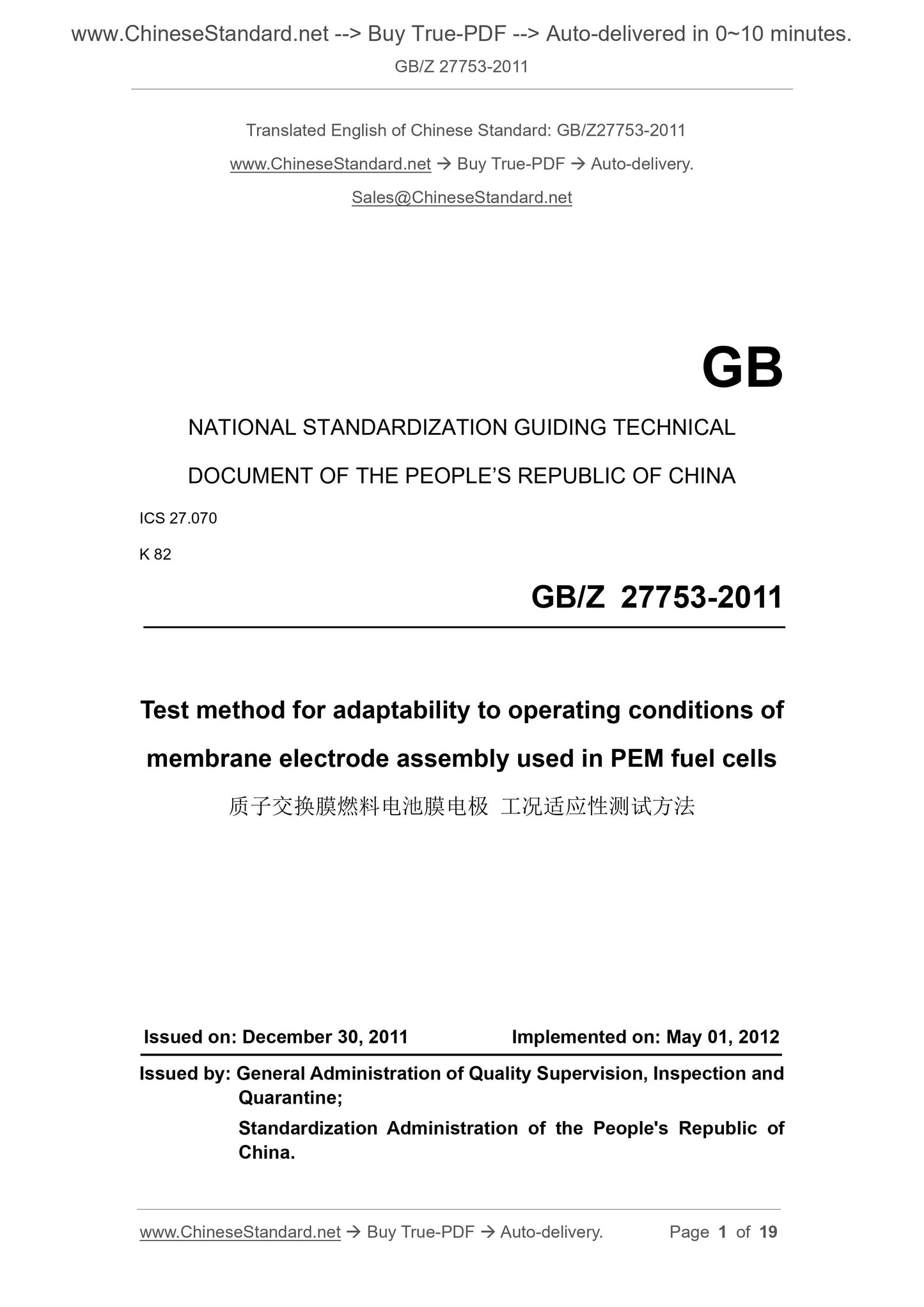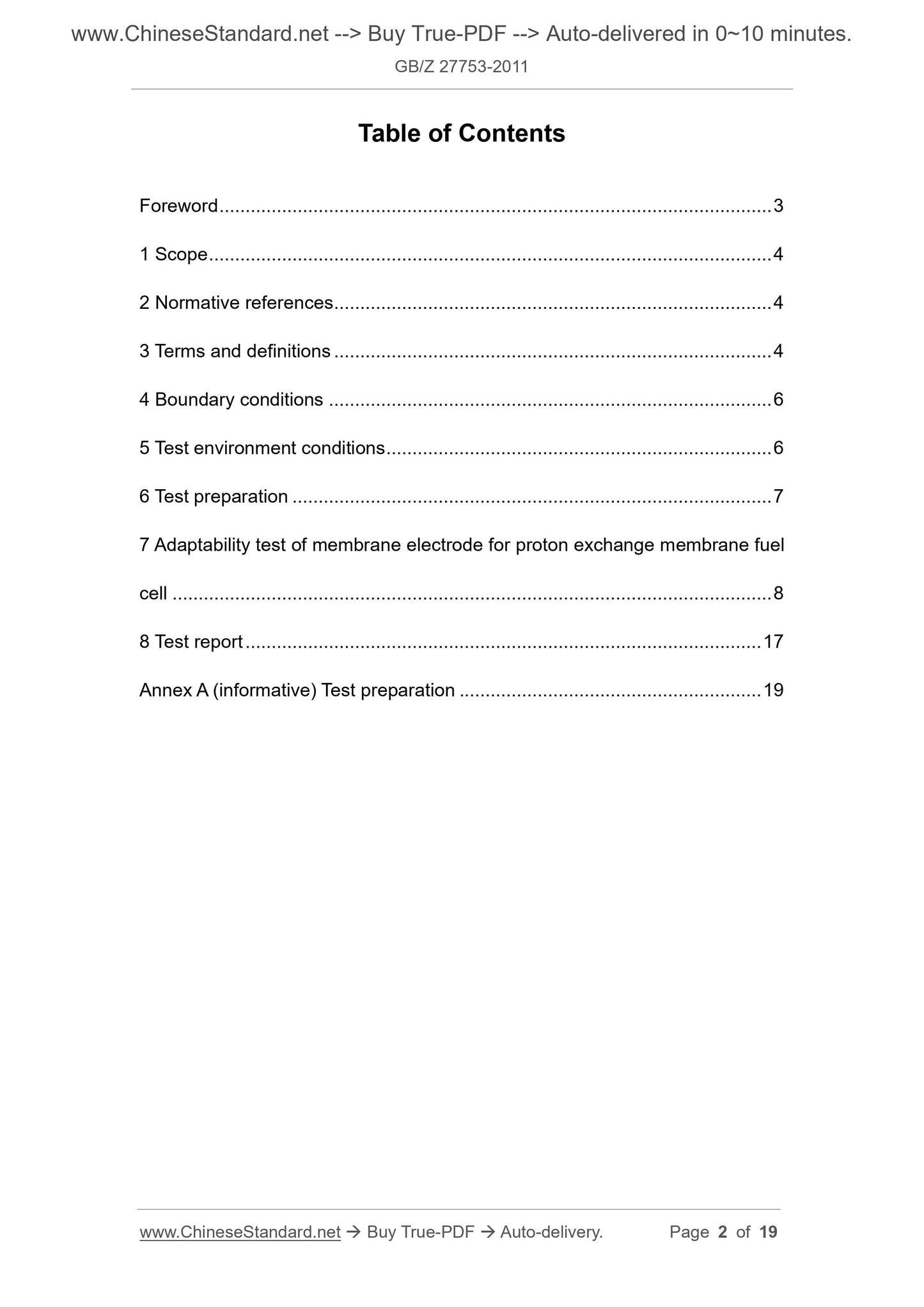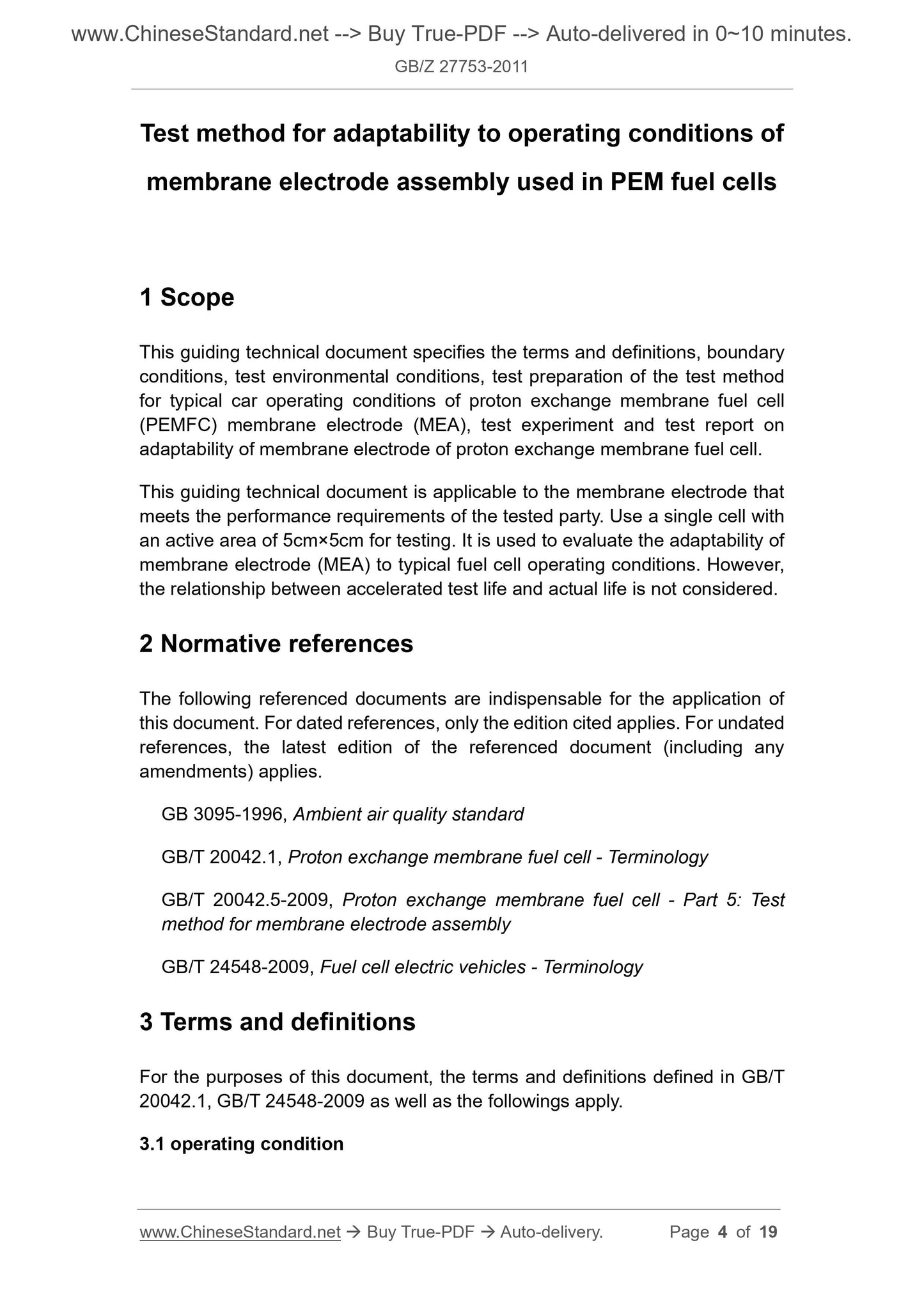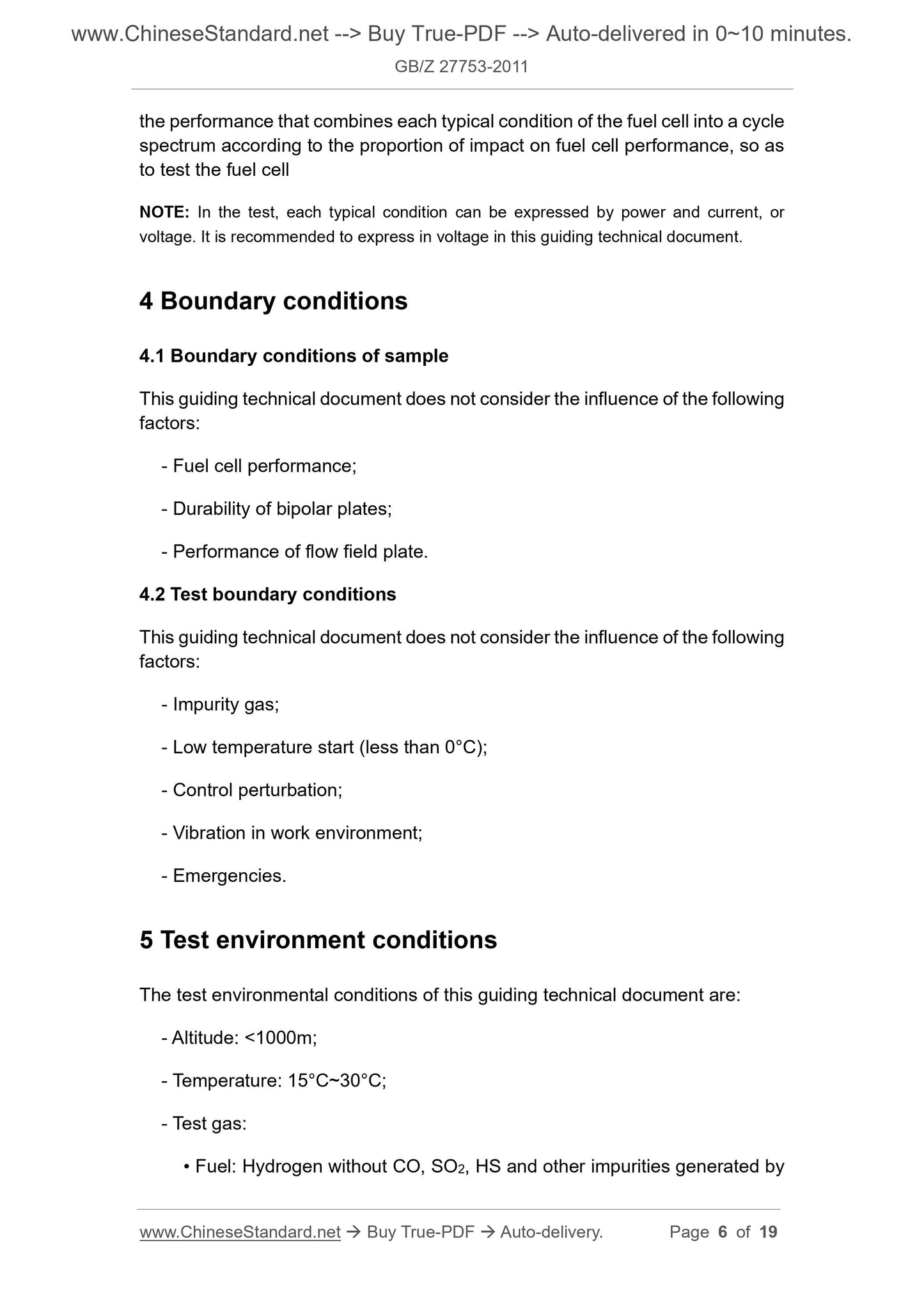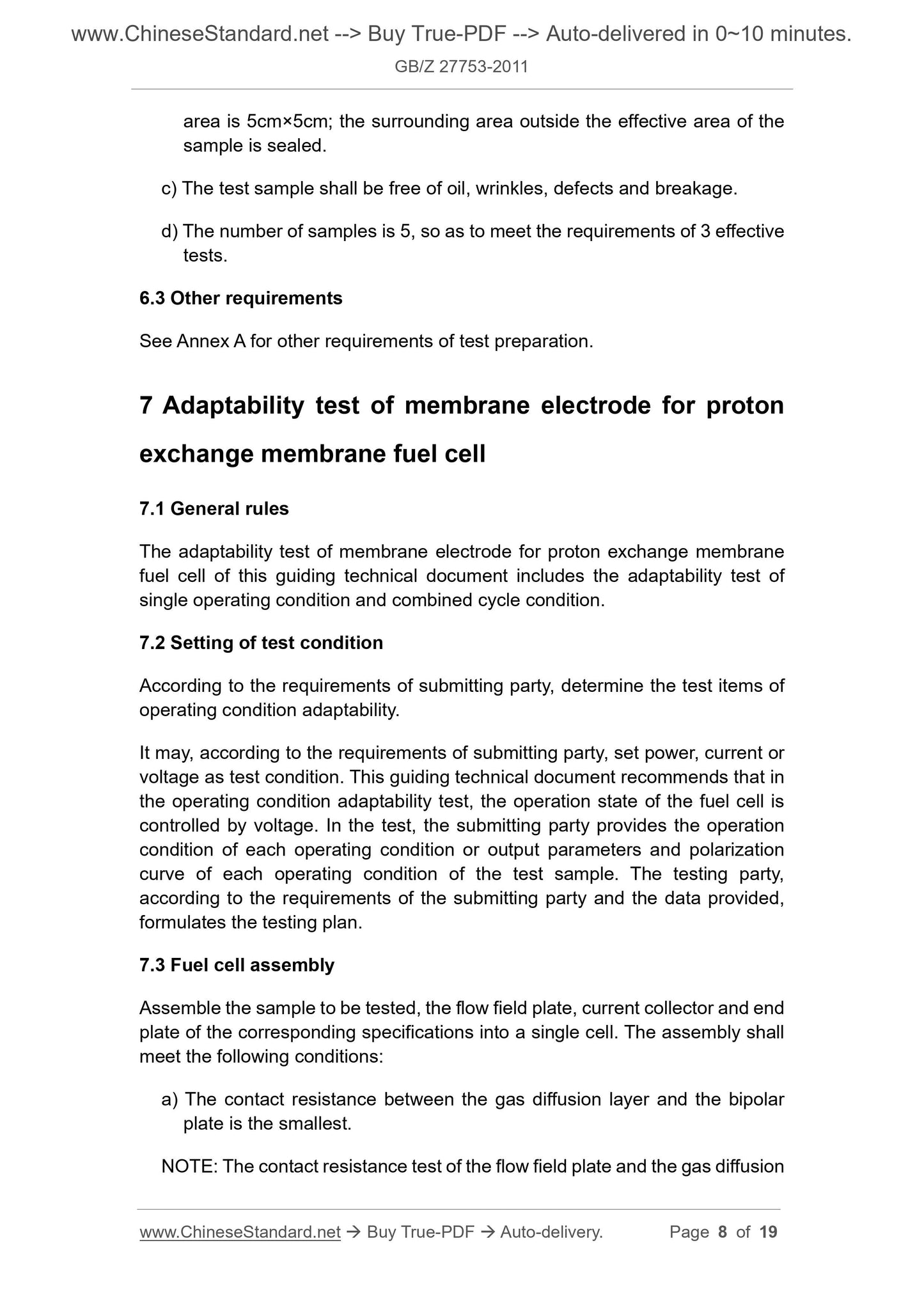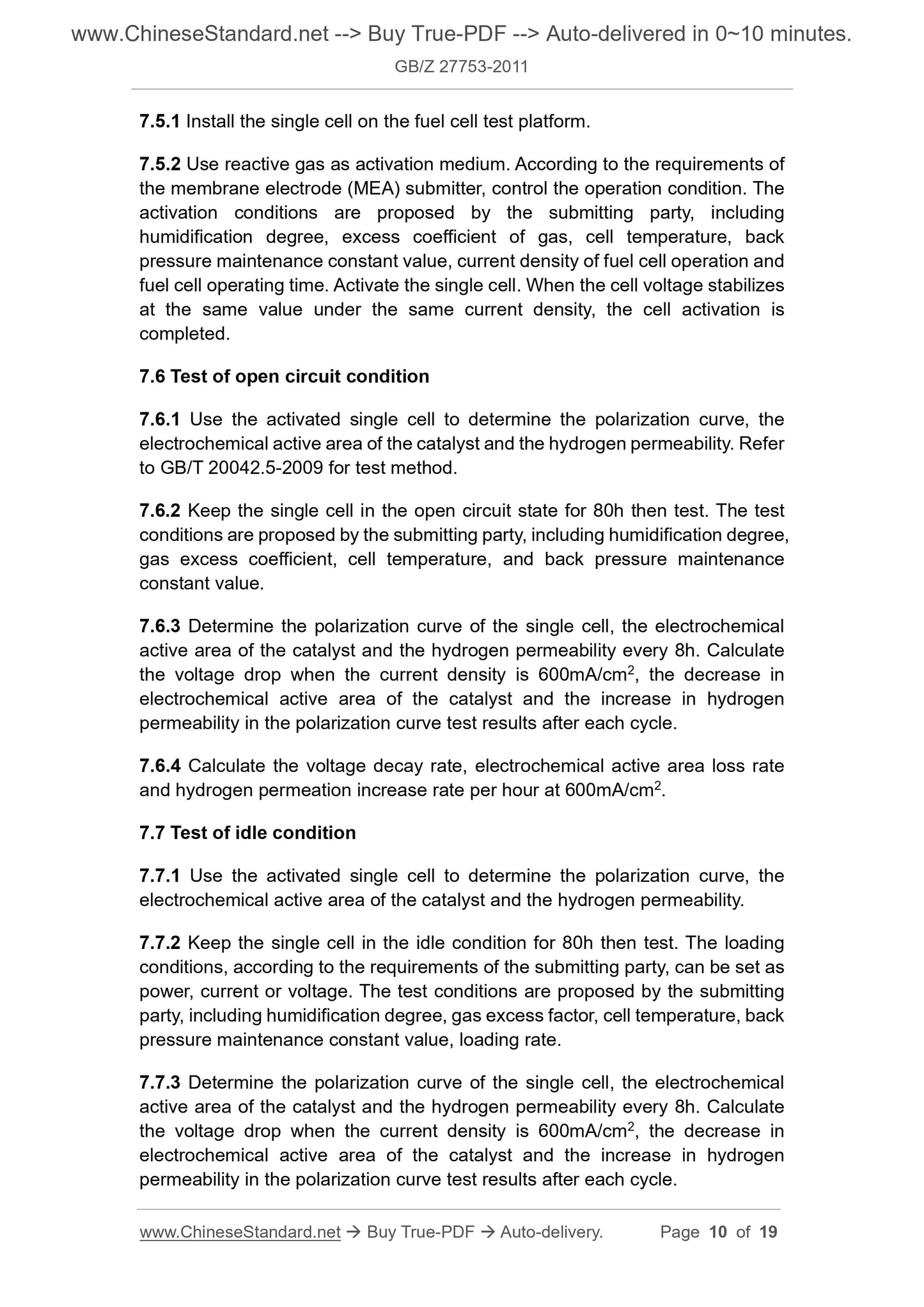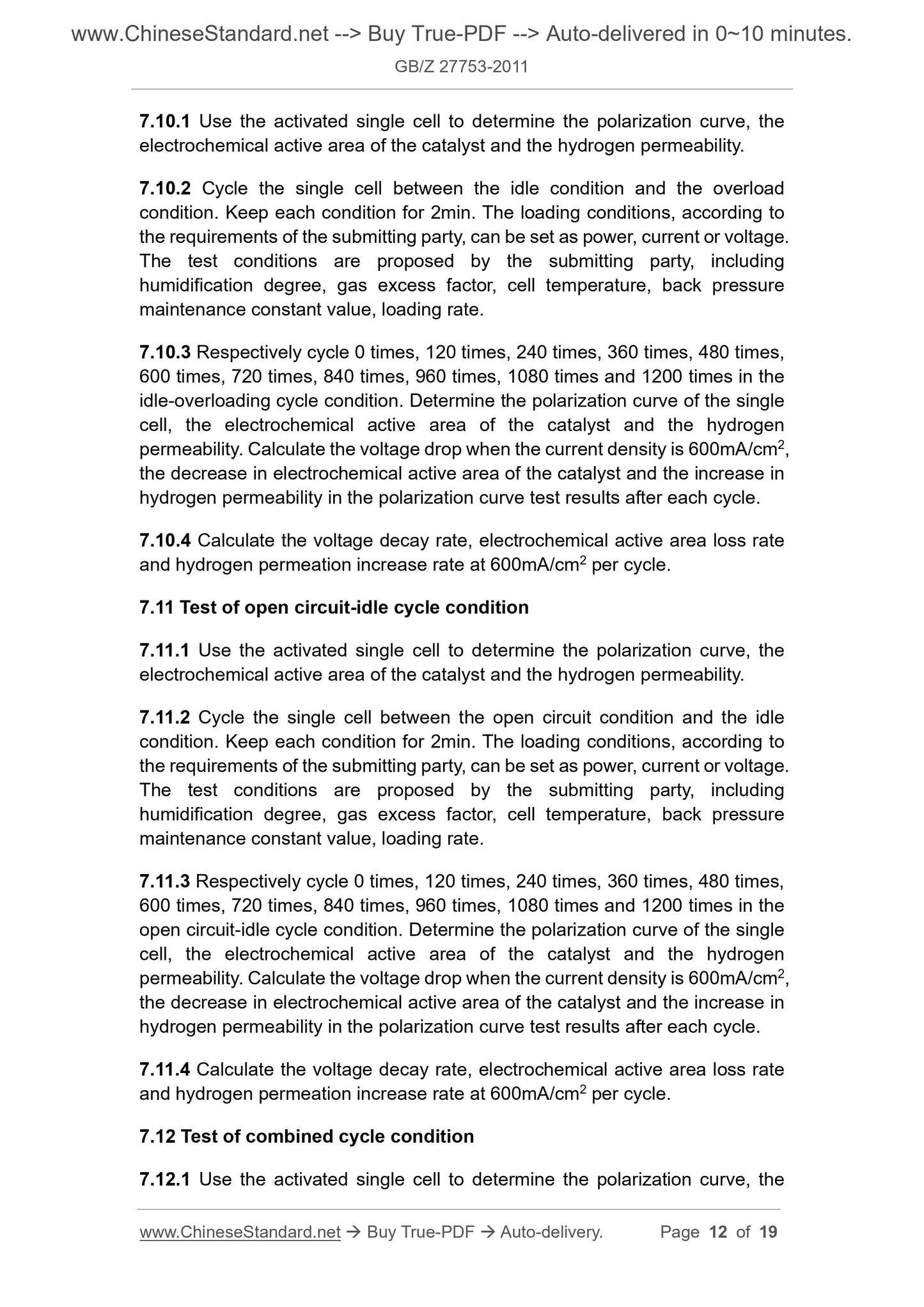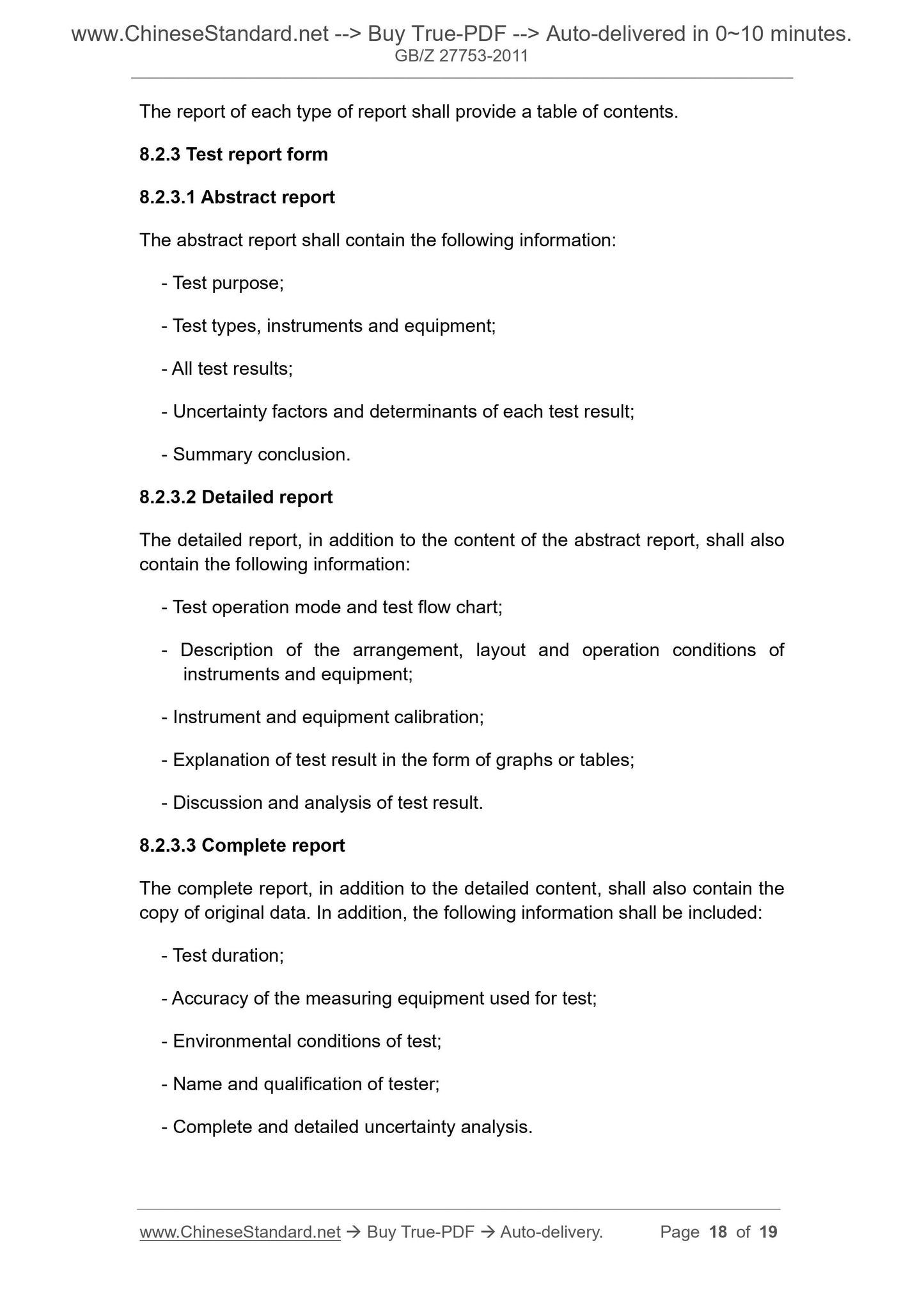1
/
of
8
www.ChineseStandard.us -- Field Test Asia Pte. Ltd.
GB/Z 27753-2011 English PDF (GB/Z27753-2011)
GB/Z 27753-2011 English PDF (GB/Z27753-2011)
Regular price
$295.00
Regular price
Sale price
$295.00
Unit price
/
per
Shipping calculated at checkout.
Couldn't load pickup availability
GB/Z 27753-2011: Test method for adaptability to operating conditions of membrane electrode assembly used in PEM fuel cells
Delivery: 9 seconds. Download (and Email) true-PDF + Invoice.Get Quotation: Click GB/Z 27753-2011 (Self-service in 1-minute)
Newer / historical versions: GB/Z 27753-2011
Preview True-PDF
Scope
This guiding technical document specifies the terms and definitions, boundaryconditions, test environmental conditions, test preparation of the test method
for typical car operating conditions of proton exchange membrane fuel cell
(PEMFC) membrane electrode (MEA), test experiment and test report on
adaptability of membrane electrode of proton exchange membrane fuel cell.
This guiding technical document is applicable to the membrane electrode that
meets the performance requirements of the tested party. Use a single cell with
an active area of 5cm×5cm for testing. It is used to evaluate the adaptability of
membrane electrode (MEA) to typical fuel cell operating conditions. However,
the relationship between accelerated test life and actual life is not considered.
Basic Data
| Standard ID | GB/Z 27753-2011 (GB/Z27753-2011) |
| Description (Translated English) | Test method for adaptability to operating conditions of membrane electrode assembly used in PEM fuel cells |
| Sector / Industry | National Standard |
| Classification of Chinese Standard | K82 |
| Classification of International Standard | 27.070 |
| Word Count Estimation | 17,157 |
| Date of Issue | 2011-12-30 |
| Date of Implementation | 2012-05-01 |
| Quoted Standard | GB 3095-1996; GB/T 20042.1; GB/T 20042.5-2009; GB/T 24548-2009 |
| Regulation (derived from) | ?National Standard Approval Announcement 2011 No.22 |
| Issuing agency(ies) | Ministry of Health of the People's Republic of China |
| Summary | This standard specifies the terms and definitions of proton exchange membrane fuel cell membrane electrode (PEMFC) (MEA) operating conditions typical automotive test methods, boundary conditions, test environmental conditions, test preparation, proton exchange membrane fuel cell membrane electrode on adaptability testing laboratory and test reports. This guidance document applies to the membrane electrode technology is proposed to detect side meets the performance requirements, the use of the active area of ??5 cm �� 5 cm single cell test, used to evaluate the membrane electrode (MEA) adaptation of a typical fuel cell operating conditions, but does not consider the correspondence between accelerated life testing and real life. |
Share
